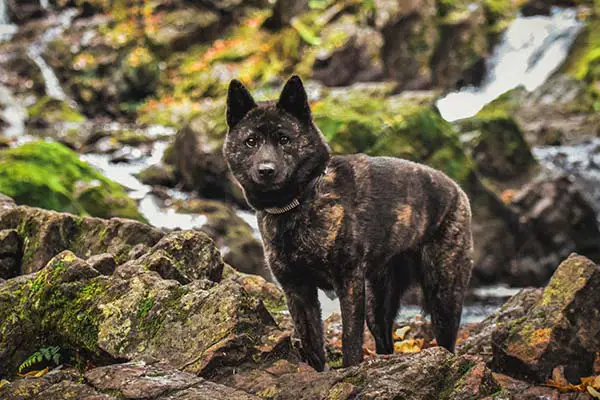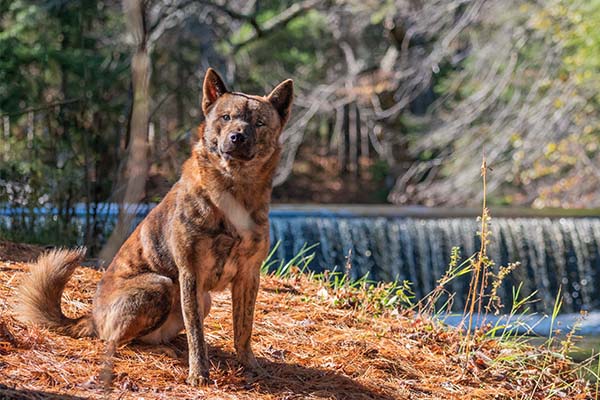The Kai Ken is a medium-sized dog and one of Japan’s six native breeds. The Kai Ken is a unique breed that was traditionally employed to hunt a variety of animals in Japan’s highlands. Kai is extremely intelligent and quick to learn. They appear to learn at the same rate as the other Japanese breeds, if not faster. They are less self-sufficient and more eager to satisfy their companions. The Japanese regard Kai Ken as a trustworthy protector who is completely dedicated to his master.
Kai Ken is an athletic and bright individual that has a great passion to hunt. Kai is a free-thinking individual who can build great bonds with their family. They are strong swimmers and climbers who have been known to climb trees and swim rivers in search of games. Kai has a characteristic brindle coat that comes in three colors: black (Kuro-Tora), brown (Chu-Tora), and red (Aka-Tora). Red brindle is the rare coat color. In ancient times, the dog’s distinctive coloration and brindle pattern let it blend in with the hilly forests where it hunted, camouflaging it against prey and predators. The amount of brindle and the pattern of brindle will differ from dog to dog.
Most puppies are born entirely black, and their brindle will develop as they age and alter during the first five years of their lives. The Kai Ken requires basic canine care at home. They can be kept in apartments if they get frequent exercise in the form of leashed walks. Bathing should be limited to just when necessary due to the breed’s innate cleanliness. Brushing is advised, especially during the twice-yearly coat blowing





 Health
Health Grooming
Grooming Exercise
Exercise Training
Training Nutrition
Nutrition